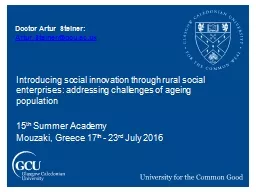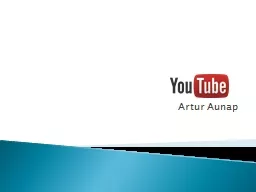PPT-Doctor Artur Steiner:
Author : mitsue-stanley | Published Date : 2017-05-31
ArturSteinergcuacu k Introducing social innovation through rural social enterprises addressing challenges of ageing population 15 th Summer Academy Mouzaki
Presentation Embed Code
Download Presentation
Download Presentation The PPT/PDF document "Doctor Artur Steiner:" is the property of its rightful owner. Permission is granted to download and print the materials on this website for personal, non-commercial use only, and to display it on your personal computer provided you do not modify the materials and that you retain all copyright notices contained in the materials. By downloading content from our website, you accept the terms of this agreement.
Doctor Artur Steiner:: Transcript
Download Rules Of Document
"Doctor Artur Steiner:"The content belongs to its owner. You may download and print it for personal use, without modification, and keep all copyright notices. By downloading, you agree to these terms.
Related Documents














